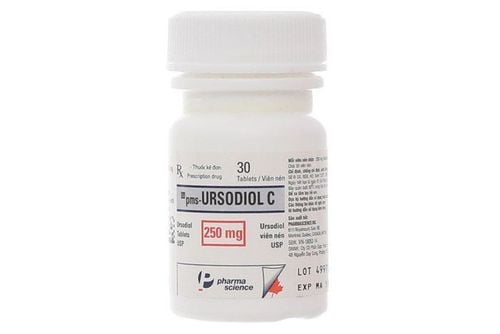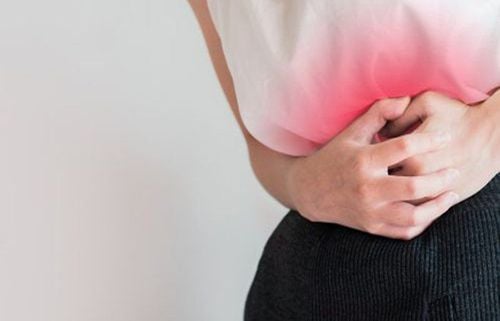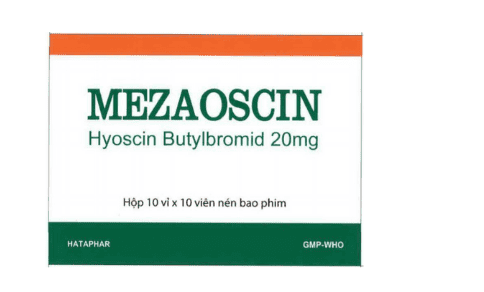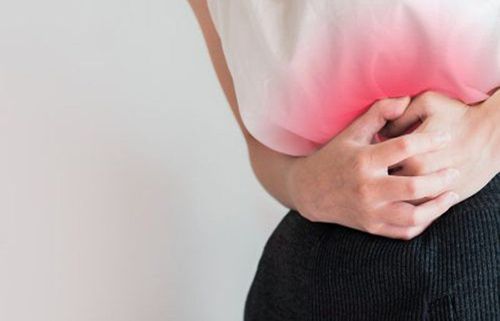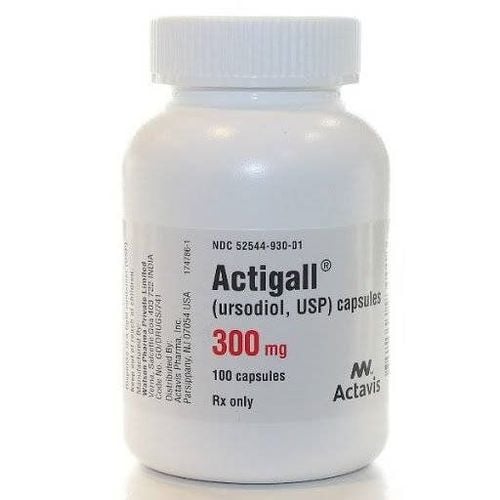This is an automatically translated article.
Cholecystitis is an inflammation of the gallbladder usually caused by a gallstone getting stuck in the opening of the gallbladder. Accordingly, acute cholecystitis can lead to fever, pain, and nausea. The treatment in these cases is cholecystectomy. Conversely, if not treated in time, serious complications of acute cholecystitis can be acquired such as gallbladder perforation, necrosis, fibrosis, and gallbladder retraction or secondary bacterial infection.
1. Overview of acute cholecystitis
Acute cholecystitis is the result of obstruction of the bile ducts, usually by gallstones, after which the gallbladder becomes distended and a chemical or bacterial inflammatory reaction occurs. People with acute cholecystitis often have persistent right upper quadrant pain, loss of appetite, nausea, vomiting, and high fever. About 95% of people with acute cholecystitis are caused by gallstones. Epidemiologically, acute cholecystitis is three times more common in women than men until age 50, and then about one and a half times more common in women than in men.
Severe acute cholecystitis can lead to complications of acute cholecystitis, necrosis of the gallbladder wall, known as necrotizing cholecystitis. When the infection spreads into the abdomen, it can cause acute peritonitis. This is a serious complication of gallstone disease and can lead to sepsis, septic shock, and life-threatening illness.
Risk factors for gallstone formation, the main cause of acute cholecystitis :
Family history of gallstones from the maternal side Crohn's disease Diabetes mellitus Coronary artery disease Stage kidney disease end Hyperlipidemia Rapid weight loss Obesity Old age Pregnancy

Viêm túi mật cấp thường do sỏi mật gây ra
2. Symptoms of acute cholecystitis
Signs and symptoms of cholecystitis include right upper quadrant pain, fever, and high white blood cell count. The pain usually occurs around the gallbladder, in the right upper quadrant of the abdomen.
In the case of acute cholecystitis, the pain has a sudden onset, more intense pain. If left untreated, the disease will often get worse, and taking deep breaths will make the pain even more intense. The pain may radiate from the abdomen to the right shoulder or back.
In addition, other symptoms of acute cholecystitis may include:
Abdominal bloating Pain in the upper right side of the abdomen Anorexia, little or no appetite Nausea Vomiting Vomiting Sweating possible mild fever and chills in acute cholecystitis. After a meal, especially a meal high in fat, the symptoms of cholecystitis will worsen.
3. How is acute cholecystitis diagnosed?
The diagnosis of acute cholecystitis will be directed toward patients who have had biliary colic or ultrasonography who already have gallstones. On examination, palpation of a distended gallbladder in the right hypochondrium and intense tenderness should suggest an inflammatory gallbladder.
To confirm the diagnosis, the following tests will be ordered:
Ultrasound: This is a very sensitive imaging tool for any gallstone and can show the condition of the gallbladder. Blood tests: A high white blood cell count may indicate an infection. In addition, high serum bilirubin, alkaline phosphatase, and aminotransferase levels can also help the doctor make a diagnosis. Computed tomography (CT): Imaging of the gallbladder can reveal signs of cholecystitis. Hepatobiliary iminodiacetic acid (HIDA) scan: Also called a biliary scan, hepatobiliary scan, or hepatobiliary scan, it creates images of the liver, gallbladder, biliary tract, and small intestine. This tool allows the doctor to monitor the production and excretory flow of bile from the liver to the small intestine and determine if there is a blockage and where the blockage is located.
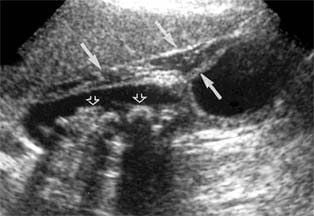
Thành túi mật dày, giảm âm (mũi tên đặc) ở một bệnh nhân viêm túi mật cấp
4. Treatments for acute cholecystitis
A healthy diet can help prevent gallstones, which are a common cause of acute cholecystitis. However, when signs of cholecystitis have occurred, the person needs to be hospitalized.
At this time, the patient will not be allowed to eat any food. Instead, they will be given intravenous fluids to ensure the water and energy they need. Pain relievers, inotropes, and antibiotics may also be prescribed at this time.
In most cases, surgery is always recommended for acute cholecystitis because of the high rate of recurrence due to inflammation associated with gallstones. However, if there is a low risk of complications, the surgery is done as an outpatient procedure, meaning the patient can go home the same day. If complications of acute cholecystitis, such as gangrene or perforation of the gallbladder, occur, the patient will need immediate cholecystectomy. If the patient has an infection, a small catheter can be inserted through the skin into the gallbladder to drain the infected fluid.
Various forms of cholecystectomy can be performed by laparotomy or laparoscopy. In it, laparoscopic cholecystectomy is manipulated through several small incisions in the skin. A camera and light source will be inserted into the abdomen to help the surgeon see inside the abdomen. Instruments will also be inserted afterwards to remove the gallbladder through other incisions. Compared with open surgery, the advantage of laparoscopic method is that the incision is small, so the patient usually has less pain after the intervention and less scarring.
After cholecystectomy, the bile that is excreted by the liver with each meal will flow directly into the small intestine. This usually does not affect the overall health and digestive system of the majority of patients; however, a small number of patients may experience frequent diarrhea, especially when high in fat intake due to malabsorption syndrome. Therefore, it is advisable to eat small meals and avoid eating large meals at the same time because it can disturb the system and produce a bile duct constrictive response.
5. Complications of acute cholecystitis
Cholecystitis can cause abdominal pain and untreated acute cholecystitis can lead to:
A fistula, a tube or channel, can form and grow if a large stone erodes through wall of the gallbladder, connecting the gallbladder and the duodenum. Swollen gallbladder: If the gallbladder becomes inflamed because of a buildup of bile, it can stretch and swell, causing pain. There is an increased risk of gallbladder perforation or laceration of the gallbladder wall, as well as infection and tissue necrosis. Gallbladder abscess: In 3 to 19% of cases, acute cholecystitis can lead to gallbladder abscess. Gallbladder necrosis: Gallbladder tissue may die and necrosis progresses, leading to perforation or rupture of the gallbladder. Without treatment, up to 10% of patients with acute cholecystitis will have local perforation and 1% will develop free perforation and peritonitis. Cholestasis: If a gallstone is impacted in the common bile duct, it can compress and block the common bile duct. The result is cholestasis and hepatitis. Pancreatitis: Gallstones can sometimes pass from the gallbladder into the biliary tract, leading to blockage of the pancreatic duct and causing pancreatitis.

Viêm tụy là một trong các biến chứng viêm túi mật cấp gây ra
6. Ways to prevent acute cholecystitis
Some measures can reduce the risk of forming and developing gallstones, thereby reducing the risk of cholecystitis:
Limit saturated fat intake Maintain breakfast, lunch time and dinner regularly, without skipping meals Exercise 5 days a week, at least 30 minutes at a time Lose weight if you are overweight In short, without proper treatment, acute cholecystitis can sometimes lead to to serious life-threatening complications. Therefore, instead of worrying "is acute cholecystitis dangerous", patients should be considered for timely surgical treatment of acute cholecystitis to prevent potential risks. There are several preventative measures for acute cholecystitis, both for a healthy digestive system and for overall overall health.
Please dial HOTLINE for more information or register for an appointment HERE. Download MyVinmec app to make appointments faster and to manage your bookings easily.




